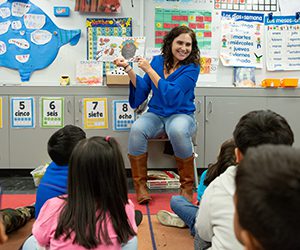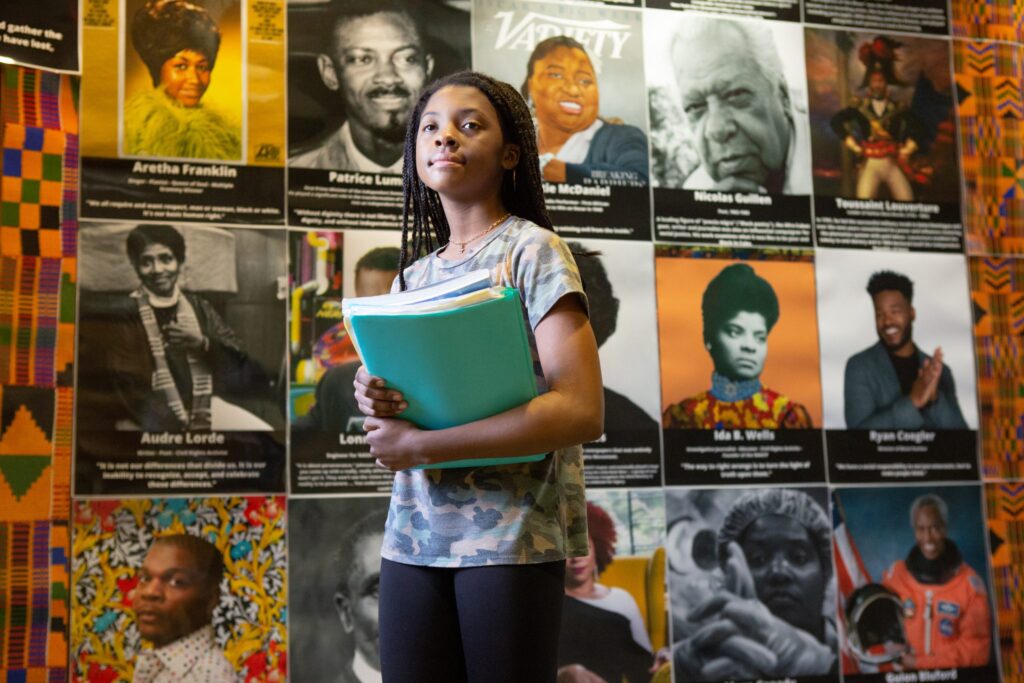As a bilingual Latino teacher of color, lifelong public school student, and education advocate my entire life in New York City, I never could see anyone that I could role model myself after. Almost all the teachers and professors across my own P-12 schools and higher education, and even “urban education” departments and programs, have been almost exclusively all White, transient or city transplants, and non-public school alumni. The relationships and mentorships with teachers of color with whom I’ve built relationships is not happenstance, but rather a direct result of my own determination to find aspirational role models. For example, my Ph.D. thesis advisor was also my undergraduate education studies professor, because I knew I needed to reach out to the handful of Black and Latino professors and mentors I’ve known for support who would ensure my successful graduation.
Teachers of color currently comprise only 20% of all public school teachers nationally, while more than half of the students are students of color. This pattern continues at the college level, as research shows that university faculty are also majority White. As the populations of students of color and multilingual learners continue to grow nationally, so must the focus on teachers from a range of diverse backgrounds. Efforts to diversify the teacher workforce must start by focusing on developing, supporting and retaining community teachers of color: educators who are from, live and teach in the local public schools of their own community, as these populations of teachers often reflect and live in the communities as their students and families.
Why does teacher diversity and representation matter?
Research shows that public school students have better outcomes when their classroom teachers reflect the same and/or similar racial, ethnic, cultural and linguistic identifiers as them, their family and communities. For example, teachers from low-economic backgrounds, public school alumni, English learners, people with disabilities, and so on, who are homegrown in the local communities where they are from offer unique insights into how local public schools and education affirms or silences students’ experiences––from a lived knowledge perspective.
Teachers of color and teachers from diverse backgrounds often offer windows and mirrors of possibilities and aspirations for the students, schools and communities they serve. Research shows that diversifying the teacher workforce benefits all students, regardless of race and ethnicity. So why do teachers of color comprise only 1 out of 5 of all public school teachers?
Ed Trust’s 50-state data and policy scan on teacher diversity provides data analyses and a landscape of policies and practices in each state that equips advocates, educators, and policymakers leading this work. In states like New York, See Our Truth –– a first-ever detailed look at statewide data exploring what teacher and school leader diversity looks like in districts across New York –– found that one-third of all New York schools have no Black or Latino teachers. Meanwhile students in New York City are estimated to be around 41% Latino, 24% Black, 17% Asian, and 15% White.
It is important for states, school districts, advocates, educators, and policymakers to continually analyze and deeply understand the specificities of how local communities function, and in turn, what local communities need. How are local community members actively targeted and recruited as teachers? Is there access locally to teacher education or teaching opportunities, or do local community members have to leave their neighborhood and state to teach elsewhere? Can homegrown community teachers remain in their own local school communities, or has gentrification and the rising costs of city living pushed them out, and therefore stifled the possibility of students having community teachers?
These questions led to my own study on local Latina public school and community teachers. I wanted to understand and center the stories of an understudied teacher group: how local public school alumni became local public school teachers. In particular, how lived, educational and community-rooted experiences inform their conceptualizations as teachers, shape their teaching and curriculum decisions, and inform their relationships with students and families. The throughline in these teachers’ stories was how unclear paths and non-linear trajectories into community teaching resulted in difficult teacher paths and journeys, and for some, even pushed them out of the classroom and teaching.
Why start locally?
To conceptualize and make policy national, it usually starts locally. State and federal policymakers can – and should – look to impactful locally based initiatives to understand how to recruit, develop, support, and retain emerging teachers and educators of color.
To develop the next generation of strong public school teachers and school leaders of color, state, district, and school leaders must invest in local public school alumni. Specifically:
- States, school districts and leaders, policymakers, and advocates should be documenting and gathering current and ongoing public school alumni data, which is currently not happening. For example, what is the percentage of alumni that become public school teachers in every public school across the nation? Post-graduation career data must be collected and analyzed to gauge and understand local community needs and how recruiting and supporting local community teachers of color can address these needs.
- Establish clear pathways into teaching and teacher education for public school alumni to become public school teachers. I refer to this unique population as alumni community teachers –– educators who received a public school education, who currently teach in the same community where they have lived and continue to live. What’s more, alumni community teachers should be guaranteed loan forgiveness and free/low-cost opportunities for their continued public service, as alumni of the same school system and schools as their students.
- Offer teacher mentorship, effective mentorship models, and teacher-mentors of color to develop, support, and retain local community teachers of color, as these central and explicit connections are often missing from traditional teacher education programs and education. Since the public school teaching force has historically and continues remaining majority White, district and school leaders should ensure that all public school teachers of color have opportunities to learn from other teachers and leaders of color.
The time is now for states, school districts, school leaders and policymakers to capitalize on the opportunity to strengthen public schools and their teacher workforce through a recentering of locality, local roots, and community-centered approaches. To authentically engage in teacher diversity and the unique needs of local communities, the answer is to start locally. Community teachers, in every state and city, must be at the center of all advocacy efforts.







